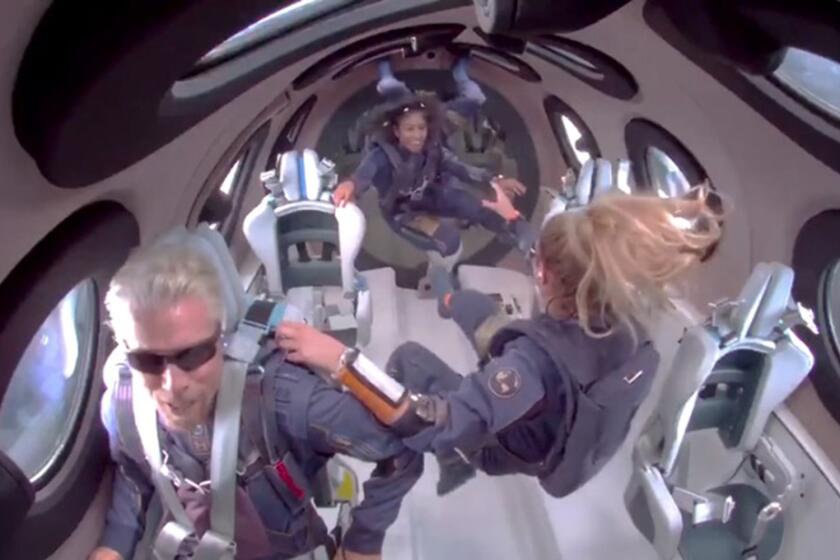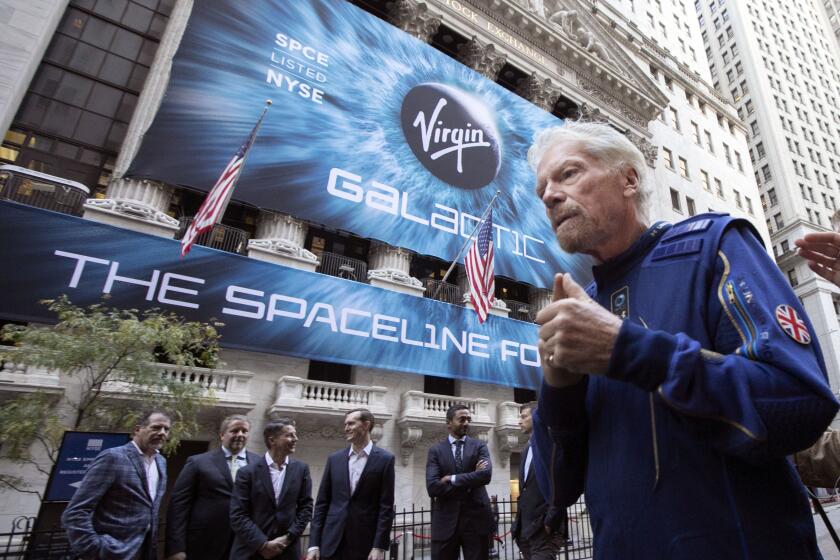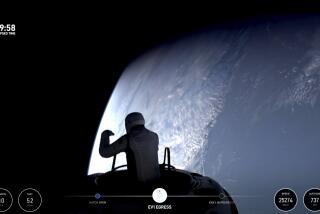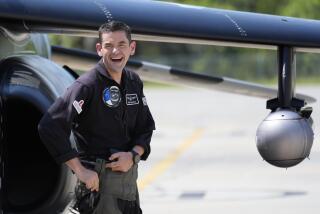Dream of going to space? Virgin Galactic just launched commercial flights
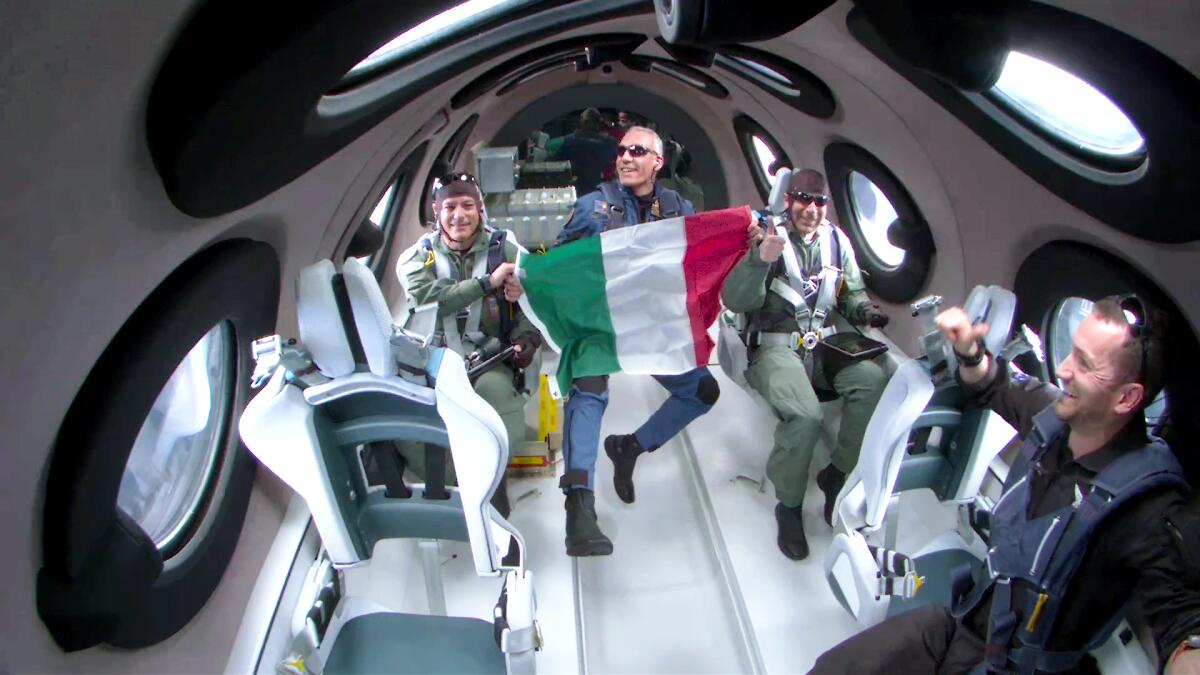
- Share via
For years, British billionaire Richard Branson vowed that commercial spaceflights with his firm Virgin Galactic were just around the corner.
On Thursday, that hype finally became reality when three Italian researchers boarded the VSS Unity space plane as Virgin Galactic’s first paying passengers and flew about four minutes in suborbital space.
The researchers — Col. Walter Villadei and Lt. Col. Angelo Landolfi of the Italian Air Force and Pantaleone Carlucci, an engineer with the National Research Council of Italy — spent their precious minutes in microgravity conducting scientific research on topics including cognitive performance and physiological responses in space.
The carrier aircraft and the attached VSS Unity space plane took off from the Spaceport America launch site around 7:30 a.m. Pacific time near Truth and Consequences, N.M., and climbed to an altitude of about 45,000 feet. By 8:30 a.m., the carrier aircraft had released the space plane, which rocketed to the edge of space.
A livestream of the flight showed the researchers strapped into their seats as they traveled at Mach 2, with one researcher puffing out his breath in visible O’s. At 8:31 a.m., the space plane’s motor cut off and the researchers were free to move around. Villadei was the only researcher to get out of his seat, and he propelled himself to the back of the craft, where he tended to experiments on a stationary rack. The other two researchers stayed in their seats, hurriedly looking at their tablets.
They all took a momentary break to unfurl an Italian flag and give the onboard camera a grin or thumbs-up.
A 90-minute flight on Virgin Galactic will cost $450,000. Ticket sales open to the general public Wednesday.
“I was concentrating on my test, my knee board, but I had the opportunity to look out,” said Carlucci, the engineer. “Speechless.”
By 8:35 a.m., everyone was back in their seats. The craft touched down back in New Mexico around 8:42 a.m.
Prior to Thursday’s flight, only Branson and Virgin Galactic employees had flown aboard the space plane. As of last year, the company had received reservations for nearly 800 tickets and collected $103.3 million in deposits and membership fees from “future astronauts,” according to Virgin Galactic’s most recent annual report.
A seat on Virgin Galactic’s space plane now costs $450,000, up from the initial price of $200,000 that early enthusiasts paid.
Thursday’s first commercial flight is a milestone for the company and for the space tourism market as a whole, said Alan Ladwig, a former NASA executive and author of the space travel book “See You in Orbit? Our Dream of Spaceflight.” But it doesn’t indicate that routine trips to space are just around the corner.
“When you’re in the $450,000 price range for a suborbital flight ... you’re a few years away from a mass market,” he said. “The milestones ahead are when’s the next flight, how often can they get a rhythm and schedule that can be predicted and counted on.”
Thursday’s mission high above the New Mexico desert showcased a part of the space tourism market not often discussed — research flights.
Although space tourism is more commonly associated with wealthy passengers achieving lifelong dreams of spaceflight, companies like Virgin Galactic and Jeff Bezos’ Blue Origin have also touted suborbital spaceflight as an opportunity for scientists to conduct their own experiments in a microgravity environment.
Virgin Galactic’s Richard Branson is set to be on a SpaceShipTwo Unity test flight as soon as July 11. Jeff Bezos plans to visit space July 20.
Performing experiments in orbital space isn’t really an option, with the cost and time needed to prepare for intensive spaceflight probably outweighing the benefits. Scientists can also send their experiments to the International Space Station, but they can’t tend to them themselves. Flying on a parabolic, or zero-gravity, plane flight is another option, but passengers experience weightlessness for only 22 seconds at a time.
“There’s nothing in between,” Villadei said. The Virgin Galactic flight “was not only to try the payloads that we developed along with the international research council, but [to] even try how this new platform can really ... provide us a kind of gap filler. What I can see is, it was really beneficial to us.”
The results of the onboard experiments will be analyzed in the next few weeks or months, Carlucci said.
Virgin Galactic Chief Executive Michael Colglazier nodded to the company’s dual revenue streams in a statement released before the flight, noting that the company’s “two dynamic products” are scientific research and private astronaut flights.
However, the flight also comes as extreme or adventure tourism is scrutinized after the implosion of the OceanGate deep-sea exploration submersible Titan, which killed all five people aboard.
Some have likened the minimal regulatory oversight for submersibles to the commercial space industry. Under federal law, the Federal Aviation Administration cannot impose safety standards on commercial craft that carry humans to space, according to Bloomberg.
It’s unclear whether the OceanGate submersible disaster could have an effect on demand for other adventure tourism ventures. Ladwig notes that while tourists sometimes die trekking to Mt. Everest or driving race cars, those incidents haven’t damped public interest or demand for those activities.
“Space and certainly submersibles, they seem to be a little different than that because [they are] such bigger experience[s],” he said. “It doesn’t seem to have the same impact in the public psyche.”
A disaster on the scale of the OceanGate submersible implosion has not happened in the commercial spaceflight industry. But there have been mishaps.
Nearly two years ago, Virgin Galactic’s spacecraft went off course during Branson’s flight to suborbital space. After an FAA investigation into the matter, the company was cleared to return to flight.
In 2014, an earlier version of Virgin Galactic’s spacecraft broke apart in midair during a powered test flight, killing the co-pilot and injuring the pilot.
More to Read
Inside the business of entertainment
The Wide Shot brings you news, analysis and insights on everything from streaming wars to production — and what it all means for the future.
You may occasionally receive promotional content from the Los Angeles Times.
